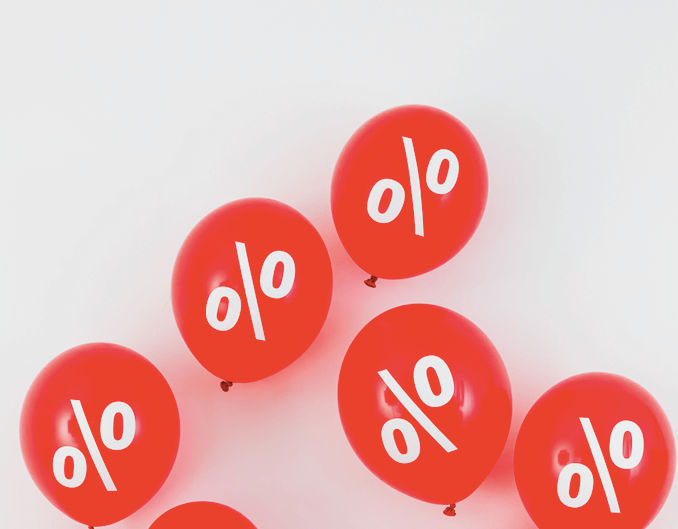
Getting on top of your finances in an economy such as ours can prove to be a difficult thing and the number of people requiring alternative methods of funding has increased exponentially. Borrowing money in a wide range of different ways has never been easier for borrowers alike, particularly in an economy where borrowing and lending is a common part of daily life.
What Is A Peer To Peer Loan?
Peer to peer loans work in a different way to conventional loans. Rather than borrowing money directly from banks or building societies, peer to peer loans are arranged between a lender and a borrower through a peer to peer lending platform.
The platform matches up potential borrowers with lenders who have deposited money onto the platform. Choosing the right peer to peer loan is essential and when making that decision, ensuring you pick one that allows you to borrow precisely what you need, gives you the perfect amount of time to pay it back and holds the lowest interest rate possible is key to success.
By choosing a peer to peer loan over a traditional loan, you are selecting to borrow through real people, as opposed to through a bank or a building society. If you are in need of a loan, the peer to peer platform is able to match you up with an individual – or peer – who is willing to lend you the amount you require.
The companies who work amongst these platforms act as intermediaries between borrowers and lenders and have no additional role in the lending process. The loans are repaid in the same way, often at a lower interest rate, on a monthly basis, and a successful application still relies on factors such as your age, your income and your credit rating. Loans can be used for whatever you need – you could use them to pay off other debts, to buy property or land or else for investment purposes.
While credit checks are essential for taking out a loan through peer to peer companies, each platform has their own check for ensuring that they are only lending to people with a solid reputation for paying back their debts. ‘Riskier’ clients will be offered higher rates to cover the additional risk attached to them, while customers with a better reputation and a more solid credit rating will be offered better deals with less repayable interest added.
Putting yourself in the best possible financial situation at an earlier date ensures your chances of being offered better loan deals when you might need it, so be conscious of any credit decisions you take at a younger age and ensure that you always pay your debts on time.
It is worthwhile thoroughly checking through your credit score and making addressing any mistakes to ensure your score is as good as possible.
Who Can Get A Peer To Peer Loan And How Much Does It Cost?

Peer to peer loan platforms consider each application on an individual basis, but having certain qualities gives you an increased chance of being accepted. Borrowers are approved based on their credit ratings, and according to the risk they hold to lenders – this is based on their borrowing history.
Checks are carried out and take into consideration a number of different things. Factors include the age of the borrower, their financial situation (including their earnings) and their previous loan history. Having an excellent reputation for paying any debts holds you in much higher stead and increases your chances of being accepted.
The amount you pay back in interest on the loan depends entirely on your personal circumstances. If you have a particularly good credit score, then you may well find yourself in a position to borrow at a much lower interest rate. In some cases, as little as 3%. However, peer to peer loans can also offer variable interest rates, meaning that the amount you pay in interest can go up and go each month.
On the contrary, having a poor credit score could be detrimental to the interest rate you’re offered. It could, in some cases, be as high as 30%, but the more likely scenario would be that your application is unsuccessful.
In general, interest rates are usually particularly competitive, and you’ll definitely pay less than you would if you decided to take out something like a payday loan, where interest rates are extremely high. While interest rates can be variable, this depends entirely on your lender and should be indicated before taking out the loan.
Because the peer to peer platforms themselves don’t gain financially from attracting lenders and borrowers – it is not them providing the loan, after all – they generally charge a fee to cover their arranging of the loan. The fee depends entirely on the platform used so shopping around to ensure that you are getting the best value for your money in terms of the cost and interest rate is particularly important.
Borrowing through a peer to peer platform has never been safer than in recent years, where data remains encrypted, and lenders keep your information as safe as it would be if you’d used any other financial institution. It is worthwhile checking what security measures the provider and platform use.
Advantages Of Peer To Peer Loans
Before taking out a peer to peer loan, ensure that you make yourself aware of the positive aspects that make them preferable to other, more conventional loan types.
Cost
Peer to peer loans have the advantage of being much more reasonably priced than traditional loans- and for a good reason. Taking banks and building societies out of the equation allows borrowers to take out loans with significantly lower interest rates, reducing the overall cost of their loan upon repayment.
More choice on the amount you borrow
When borrowing money from banks and building societies, there is usually a minimum (and naturally, a maximum) amount of money that you are able to acquire. Borrowers would be more inclined to borrow the exact amount that they require through a peer to peer lending service as opposed to through a bank, where they would be obligated to acquire, and consequently repay, much more than they had a need for.
Having the versatility to borrow precisely what you need and not a penny more makes peer to peer loans a viable, and ultimately preferable, option to borrowers.
An alternative for those who have difficulties in acquiring loans from a bank or building society
Having black marks on your credit rating, whether this is through defaulting on payments or just a single missed payment, can seriously affect the likelihood of you getting a loan through a traditional lender.
Depending on your credit rating, getting a loan through a peer to peer lender may well be accepted where banks or building societies would refuse you the service. Naturally, having a poor credit rating would mean that you would have higher interest repayments as security for lending to you.
While personal loans are still the most common reason for borrowing through a peer to peer platform, people borrow money for all sorts of reasons, all of which are a good reason for borrowing. However, specialised peer to peer loan lenders offers loans with specific uses in minds as well as loans secured by collateral which ensures that you get the best value for your loan.
What Are The Disadvantages Of Peer To Peer Loans?
There are disadvantages to every type of product, and where money is concerned it is especially important to make sure that you’re entering into the right sort of product, that has your best financial interests at heart.
With that considered, there are naturally a few disadvantages to loans taken through peer to peer platform services, and you should weigh up whether these disadvantages outweigh the advantages.
Higher interest rates
Because peer to peer platforms are often willing to lend to those with less stringent credit scores, the interest placed on loans can be higher than would be the case for conventional loans taken out through a bank or building society.
Higher interest rates result in higher repayment amounts, and this should be taken into consideration when taking out the loan itself and you should always be aware that the amount you pay back may be considerably higher than the amount you borrowed.
Loan fees
Because the companies who run peer to peer platforms are not the investors themselves, in order to run their company and consequently earn money, the vast majority of them charge a fee to borrowers when making an application.
Charges depend entirely on the platform you use to take out the loan. It is worth bearing in mind that multiple applications can mean that you pay this fee on more than one occasion. Charges such as these should be factored in when considering repayment and whether the loan is a viable option to you.
You might need a particularly high credit score
Having a strong credit rating is usually advantageous, but no more so than if you’re looking for a loan. Not having a particular score can result in the interest placed on your loan being considerably more than it would be if your credit rating were higher.
Shopping around for loans can be difficult, and with the range of loans out there, it can also be incredibly complicated. Peer to peer loans are renowned for being quick and easy, and after applying, using a straightforward application, the loan is approved or refused relatively quickly meaning that you’re able to get the ball rolling on whatever you might need the money for much more quickly than if you had borrowed through a bank.
Not covered by the Financial Services Compensation Scheme
Peer to peer loans are not covered by the Financial Services Compensation Scheme (FSCS) which typically covers losses of up to £85,000 if your bank cannot provide a service or goes under. However, peer to peer lenders will have schemes or provisional funds in place to reimburse investors where possible. This may be money put aside to help cover your losses or even just customer collections teams to help follow up on bad debts.
Easy Alternatives To Peer to Peer Loans
If peer to peer loans aren’t suitable for you and your requirements, there are a number of alternative loans and services that might be more appropriate for you. Again, alternatives come with risks as well as advantages, and you should weigh up what it is that you want from your lender before committing to any one particular service.
Take out a loan through a bank or building society
If your reasons for not wanting a peer to peer loan is based on trust, then taking out a traditional loan through a bank or building society is probably your best bet. Banks and building societies have built up a reputation for trust and knowing that you are borrowing through a reputable source can be particularly appealing.
While interest fees may well be higher; you can rest assured that the money you have borrowed is coming from the right place.
Crowdfunding
Often, loans are taken out as emergencies, because something unexpected has happened that requires immediate attention. Often, businesses have reputations and have built up customer loyalty so unexpected costs relating directly to your business could give reason for a crowdfunding mission as opposed to taking out a loan.
Building up a rapport with your customers means that often, they are willing to help out and donate small amounts. While pennies on their own wouldn’t help an awful a lot, they do make pounds so if you’re struggling to acquire a loan for whatever reason then considering undertaking a crowdfunding fundraiser might be an option for you.
Customers, friends and family members could assist you in raising the money you need. It’s fair to say that this is not always an option for people needing money but if the circumstances sit right, then it could be considered.
If you’re on the other side of the table and you’re looking for an investment opportunity, then peer to peer lending may well be for you. These investments are safely regulated by the Financial Conduct Authority and has the aim of giving those who have invested the opportunity to get higher returns on their investment.
As an investor, you can open a P2P savings account choose the rate of return on the money you invest as well as the level of risk you are willing to place on it, ensuring that you are in control of where your money goes. You don’t need to have large amounts of money to become an investor – most peer to peer loans start from as little as £10 or £20.



